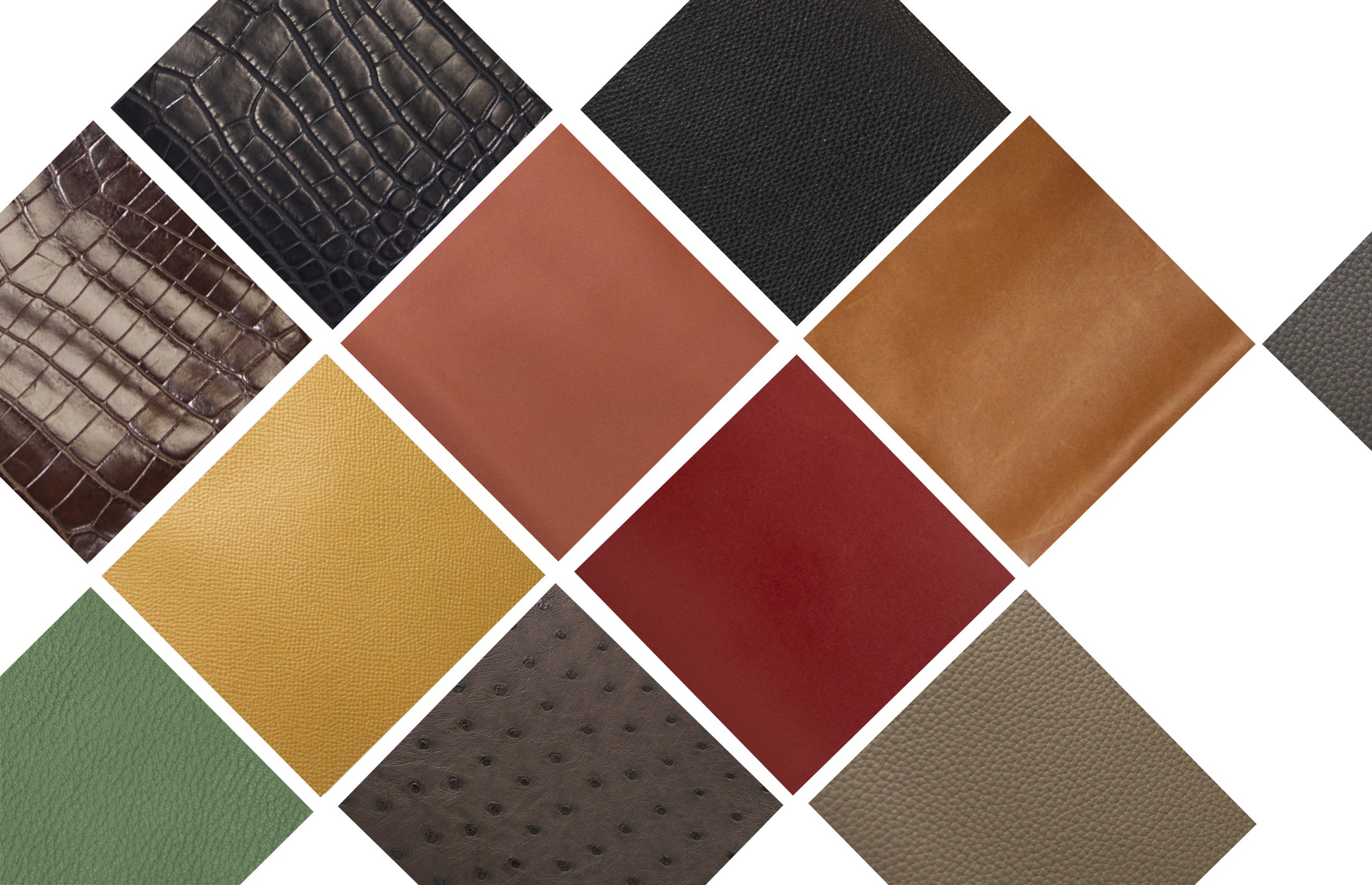Hermès is craftsmanship and Hermès is leather. No other luxury label specializes so much in exotic and everyday leather types with such an artisanal know-how. Wallets, purses, key chains, boots, gloves and of course bags are naturally made from the most elegant types of leather. Bags in particular often use different types of leather on the inside such as on the outside of the bag. Especially interesting is that some bags have been part of the Hermès DNA for decades and the leather always reflects the spirit of the time. For example, the Bolide model was already introduced in 1923 – under the name Bugatti – Kelly Bag from 1935, the Pochette Verrou that was designed by Robert Dumas in 1938 or the Constance in 1969, which that Jackie O. owned in several versions. In the past, firmer leathers were more popular, while today a bag should feel like a second skin: soft, supple, warm. Hermès leathers transform, acquire a unique patina and require special care. And of course, Hermès leather types are also unmistakable hall marks in fashion collections and furniture, and are always crafted to perfection. But leather is more than just material and craftsmanship at Hermès, as imagination always plays the main role in whether a Kelly Bag is created in Box, Barénia or Epsom leather. In this article about the Hermès leather types, you will not only learn about the respective characteristics of the most important leather types, but you will also get valuable insider knowledge about the exotic leather types.
Hermès and the love of 18th century leather.
In 1973, divers discovered the Baltic sailing ship Metta Catharina, which sank on December 10, 1786. On board, was Russia’s Juchten leather – known for its red color, waterproofing quality and unique smell that keeps insects away. When the nearly derelicted wreck was rescued, the 18th-century leather was discovered. In 1994, Hermès bought about ten of these skins to make a Sac à Dépêches and a Kelly. They count to the greatest treasures in the house of Hermès. Likewise, Hermès relies on tradition in the processing of leathers and has remained true to its origins as a manufacturer of saddles and bridles. The saddler’s stitch, pas de deux, is now a hallmark of the house and is a constant reminder that nothing is more important than skilled hands.
Barénia: saddle or handbag?
This name stands for a type of leather. Despite the misleading similarity to the Russian word barinia, which means wife of a landowner, as Dostoevsky readers know, the leather doesn’t have its origin in Russia. With its smooth surface, water repellent characteristics and beautiful warm shade, it’s no wonder that this leather was first used by Hermès to make saddles and is one of the most durable Hermès leathers. Because it absorbs the oils of the skin, Barénia leather forms a patina over time, which can only make a bag more beautiful.

Box calfskin: the Rolls Royce of leathers
Box calfskin, also known as box calf and veau leather, is one of Hermès’oldest leathers used for handbags. It is smooth and shiny, light and strong, supple and grippy. And its fine-grained surface, allows this type of leather to develop a beautiful patina over time. Thus, the initially rather stiff and dimensionally stable box calfskin becomes a cuddly object for aficionados. It is quite susceptible to light scratches and scuffs, which are more or less visible depending on the shade of the leather. Box calfskin also doesn’t like wetness, it is rather water-shy, as small bubbles can appear on the surface. Probably the most stylish advantage of box calfskin is its color persistence, which can also – depending on the Hermès bag – emphasize the character of the model and of the wearer. Hermès box calfskin requires careful and, regular care.
Goat leather to fall in love with: Chèvre de Coromandel
Chèvre de Coromandel is one of the most sought-after Hermès leathers. It comes from male mountain goats, which gives the leather a tremendous resilience distinguishs it from other types of leather offered by Hermès. It is characterized by its iridescent and lightly grained surface. The toughness of the leather and the fact that it is textured makes it virtually impervious to scratches and other imperfections – and this is despite the fact that the leather itself is light and even soft to the touch. That the reason why it’s particularly popular for Constance, Kelly and Birkin bags. Hermès has also used Chèvre de Coromandel in many bright colors, making some finishes very rare.
Chèvre Mysore: The Elegant Goat
Chèvre Mysore leather is a natural type of leather made from goatskin. It is characterized by its refined grain and scratch resistance, and is produced in limited quantities, making it a popular choice for a special order from Hermès. It’s a more refined version of Chèvre de Coromandel, but has the same qualities: lightweight and scratch-resistant.
Epsom: For every day
Epsom leather was introduced in 2004, and replaced the Courchevel leather, which was discontinued in the same year. Today, Epsom is used in numerous shapes and designs.Epsom is a calf leather with special characteristics: it is a hot-pressed leather with a rigid, subtle grain and an appealing sheen. Epsom leather is particularly popular because it tends to present the color with greater vibrancy. Another advantage is that an Hermès Epsom leather bag keeps its shape for a very long time. The embossed surface makes it virtually waterproof and less likely to show scratches. The Epsom leather type is often used to make Sellier-style Kelly and Birkin bags.
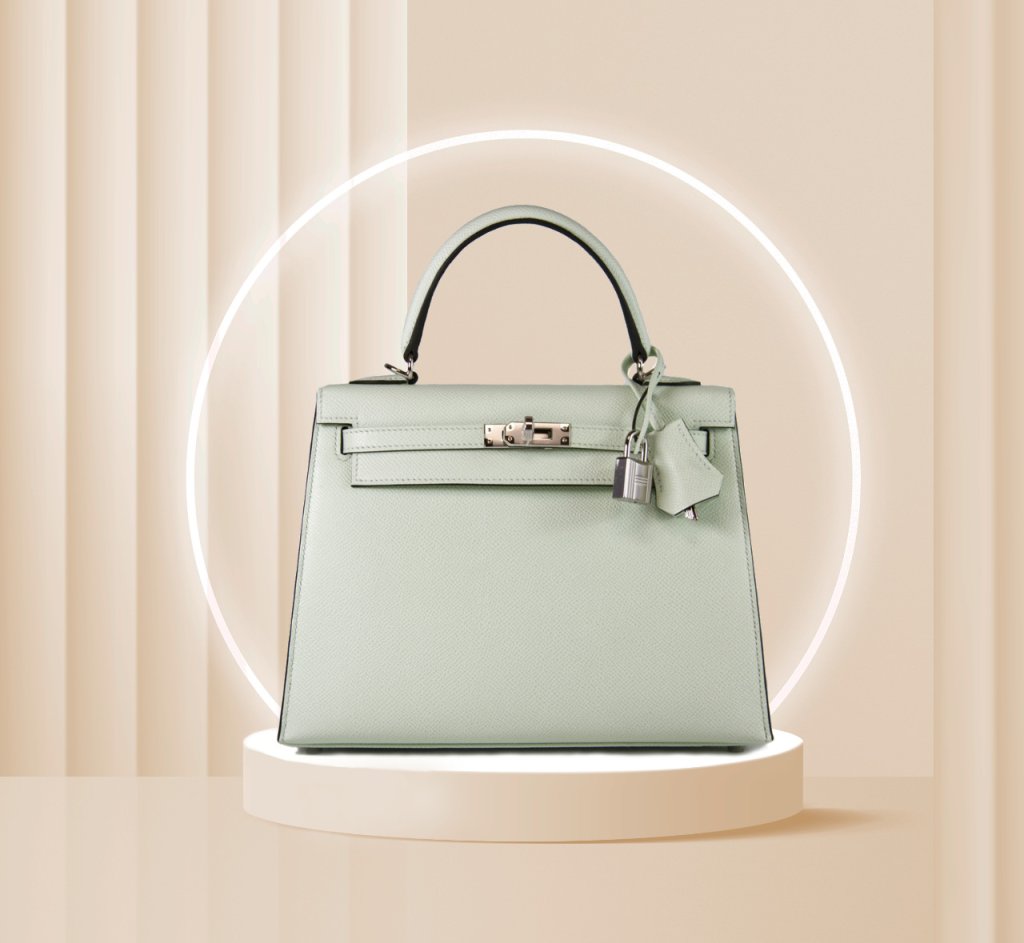
Evercolor: A cow to cuddle with
The Evercolor leather type was introduced by Hermès in 2013. It is known for its beautiful matte texture and is considered as one of the smoother leathers, although it belongs to the grained cowhide family. It has a soft feel and a slightly silky sheen. Originally used by Hermès to make small leather goods, Evercolor is now a very popular choice for Kelly and Constance Bags.
Swift: For a shiny appearance
If you appreciate bold colors with a relaxed silhouette, then Hermès’ Swift leather is the perfect choice for you. Swift leather has the ability to absorb dyes like almost no other leather, while reflecting light. This makes the colors appear brighter, more vibrant, and more iridescent than other leathers. Hermès introduced Swift leather in 2005. The fine, natural grain of Swift leather is supple and soft to the touch.
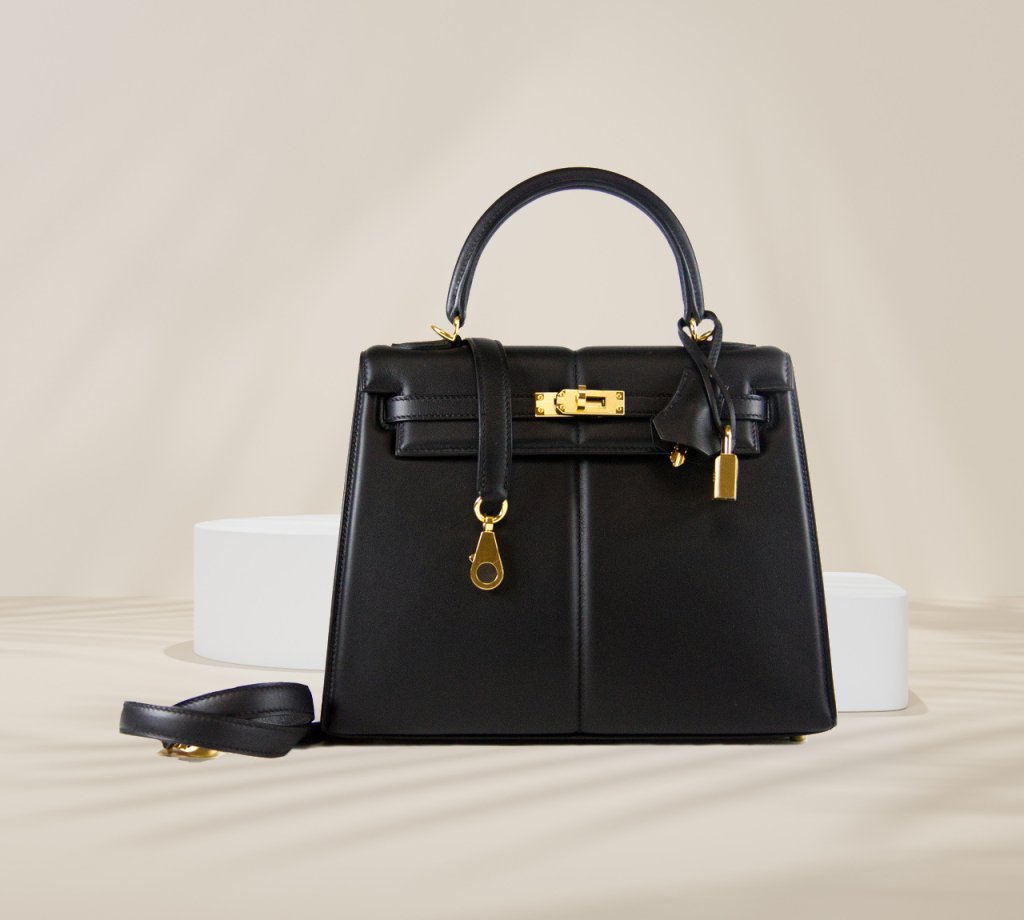
Clémence young bull leather: For the soft look.
Hermès Clémence young bull leather is elegantly textured with its rolled grain. This furniture leather was introduced at Hermès in the 1990s and has since then sparked a small revolution. Thick, supremely supple and surprisingly soft, this type of leather is nowadays used for bags that are meant to sink comfortably into themselves.
Milo lamb leather: oft like children’s skin
With Milo lambskin, its silky sheen reflects the light. It feels so comfortable that it is the favorite leather of glove makers. But at Hermès, this type of leather is also used as a handbag lining. What could be more pleasant than feeling the lipstick in Rouge H in your Contance and at the same time feeling the delicate Milo lambskin on your skin? In addition to Milo lambskin, Hermès also uses Mysore goatskin for the bag’s interior.
Sombrero calf: masculine and supple.
Calfskin is particularly suited for briefcases because this type of leather exudes several masculine facets: sensual, rugged and distinctive. It is firm, yet supple with time. This makes it ideal for the Hermès Sac à Dépêches model.
Sikkim calfskin: every millimeter counts
Sikkim calfskin has a thickness of just 9 to 11 millimeters and had an exceptional start at Hermès. It was introduced in 2010 with the iconic Kelly model. After 54 years, Hermès presented a Kelly bag which could not be more casual. The unprecedented softness of Sikkim calfskin made the otherwise sturdy Kelly Bag virtually collapse in on itself. Also new: a handle so large that for the first time fans could wear their Kelly Bag over the shoulder. Today, Sikkim leather is a popular choice for special collections and at the same time a very rare kind of leather.
Tadelakt: Confusingly beautiful
Hermès Tadelakt leather was introduced to the Hermès leather family in 2006. Generell besitzt diese Lederart eine glatte, glänzende Färbung und ein feines Finish. Generally, this type of leather has a smooth, shiny coloring and a fine finish. This is because it comes from a male calf, that has no visible scars. Hermès Tadelakt leather is often confused with the glossy Box Calf leather, as both share some similarities. However, for the professional, Tadelakt leather is always much shinier. Tadelakt leather is also susceptible to scratches depending on the color and is sensitive when it comes toto contact with water.The silky texture, shiny surface and high color receptivity make handbags made of Tadelakt appear more elegant than handbags made of Box Calf or Swift leather, with which it is often confused.
Togo calfskin: For light luggage.
Introduced in 1997, Hermès Togo leather has since then been one of Hermès’ most popular leathers. It is a natural, grained calfskin with a matte finish and visible grain. Because of its texture, Togo is less prone to scratching than many other types of leather. It is also easy to care for, as most stains can be removed with a damp cloth. Togo calfskin is a durable leather and is the perfect choice whenever you are looking for a low- maintenance leather for a bag that you plan to use regularly.
Also, many other types of leather are part of the leather library at the House of Hermès, such as Fjord leather made from the hide of an adult bull. Other new additions include Jonathan, Monsieur, Sombrero II and Veau Madame. Further, more types of leather are constantly added to the collection every year. Hermès is thus paving its way into the future with completely new types of leather.
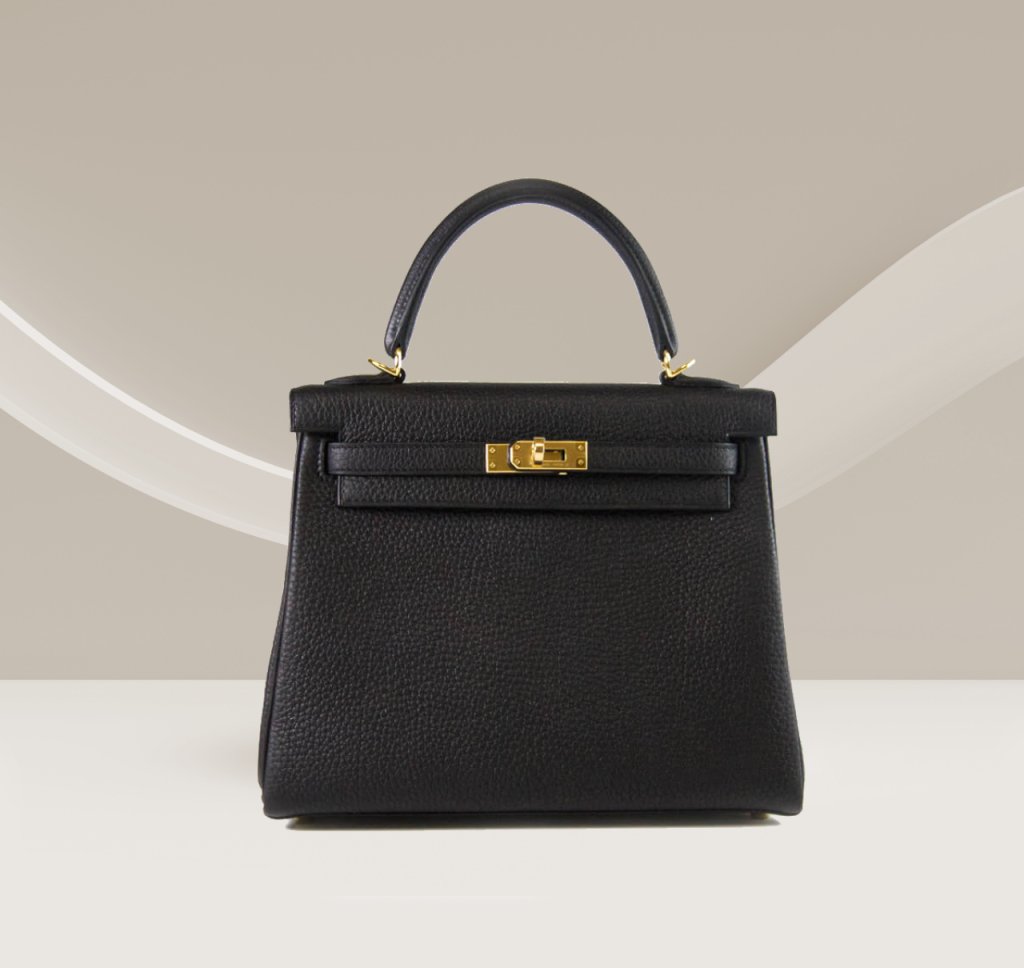
The magic of exotic leathers
Crocodile leather evokes a very special aura, with the names of exotic-sounding species and distant lands: alligator, Mississippiensis, South African niloticus, Australian porosus…Depending on the tanning, the leather may appear firm and shiny after being smoothed with an agate – or it may be matte and soft, bringing a touch of wilderness to the urban jungle – in the case of an alligator barénia. All exotic leathers processed at Hermès are used only in accordance with the strictest animal welfare regulations. The leathers come from animals that have not been specially bred. For the bags in exotic leathers produced in very small numbers worldwide, Hermès is concerned about animal welfare.
Alligator or Alligator Barénia: Noble Beauty
The coveted exotic leather of Mississippiensis alligator is available in both matte and glossy (lisse) finishes. This delicate skin is rarely found in larger handbags. Very special are bags in Alligator Mississippiensis Barénia, because tannins and oils ensure that it remains crocodile skin. You can recognize alligator handbags and accessories by the square mark next to the name Hermès.
Crocodile: The 3 essential types of leather.
The caiman crocodile can only be found on vintage handbags that have their origin in the 1990s, as Hermès has stopped producing them. You can identify vintage caiman handbags by the circle (○) next to the Hermès stamp.Niloticus crocodile is one of Hermès’ most popular exotic leathers and is offered in matte and glossy. Niloticus handbags can be identified by the two dots (–) next to the Hermès name. Porosus crocodile is the most expensive exotic material that Hermès uses. This popular exotic leather comes from animals in Asia or Australia and can be identified by a caret (^) symbol.
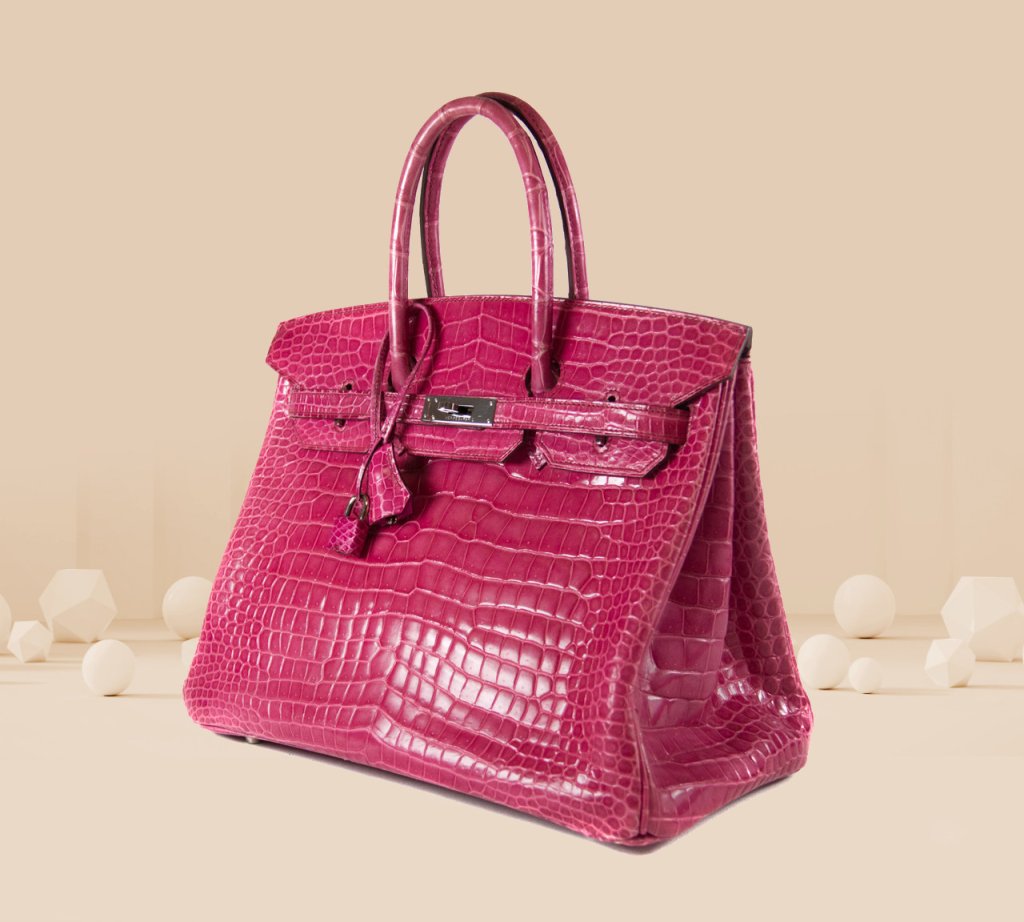
Niloticus lizard and Salvator lizard
Due to the small size of lizards, this type of exotic skin is usually used for smaller handbags and accessories at Hermès. Lizard is a delicate material that requires frequent visits to a beauty salon to prevent the scales from drying out. The lizard species Varanus Niloticus originates from the Nile River and is the most common lizard that Hermès uses. The best way to tell whether the lizard is a Niloticus is by looking at the symbol next to the Hermès name. Varanus Niloticus has a single hyphen (-) next to the Hermès name. The Varanus Salvator lizard is native to Southeast Asia. The skin is colored in a symmetrical pattern that highlights the natural riglet pattern of the skin. The Salvator lizard is marked with a double hyphen (=) next to the Hermès stamp.
Ostrich leather: a comeback to come
Actually, nothing is easier to recognize than ostrich leather, because it has small dots. The small, almost regularly distributed dots give the surface a unique design – just like the natural pattern in crocodile skins. When thinking of ostrich leather in black, the dots look particularly modern and abstract. But ostrich can also look very elegant, such as on a Birkin Bag in Blue Iris. The bag in Bleuet is more pop. Ostrich leather initially has a matte surface, is rather firm and is often offered in exclusive colors. While durable, it can darken and develop a pretty patina through use and contact with hands.
Hermès leather types: pleasure with foresight
Each of the shown Hermès leather variations reacts different sensitively to water, grease, heat, light, high humidity and dryness. Direct, prolonged sunlight also doesn’t go well with most leather types, as it dries out the leather and can also affect the color. Also a short break regarding the use is good for the leather. However, this only applies if the bag is stored under the best conditions: that means in particular a protection from light,especially warm or cold temperatures and moisture. Filling the bag with, for example, bubble wrap can also have a positive effect on the leather good during storage.
